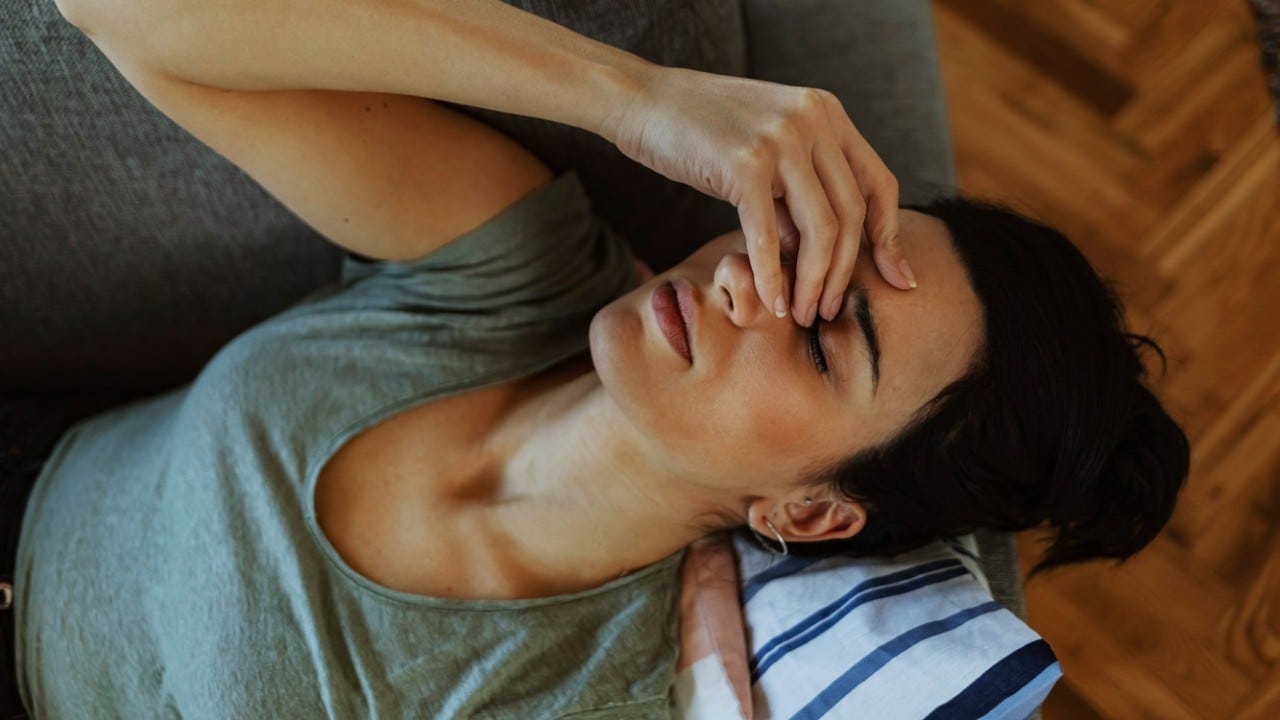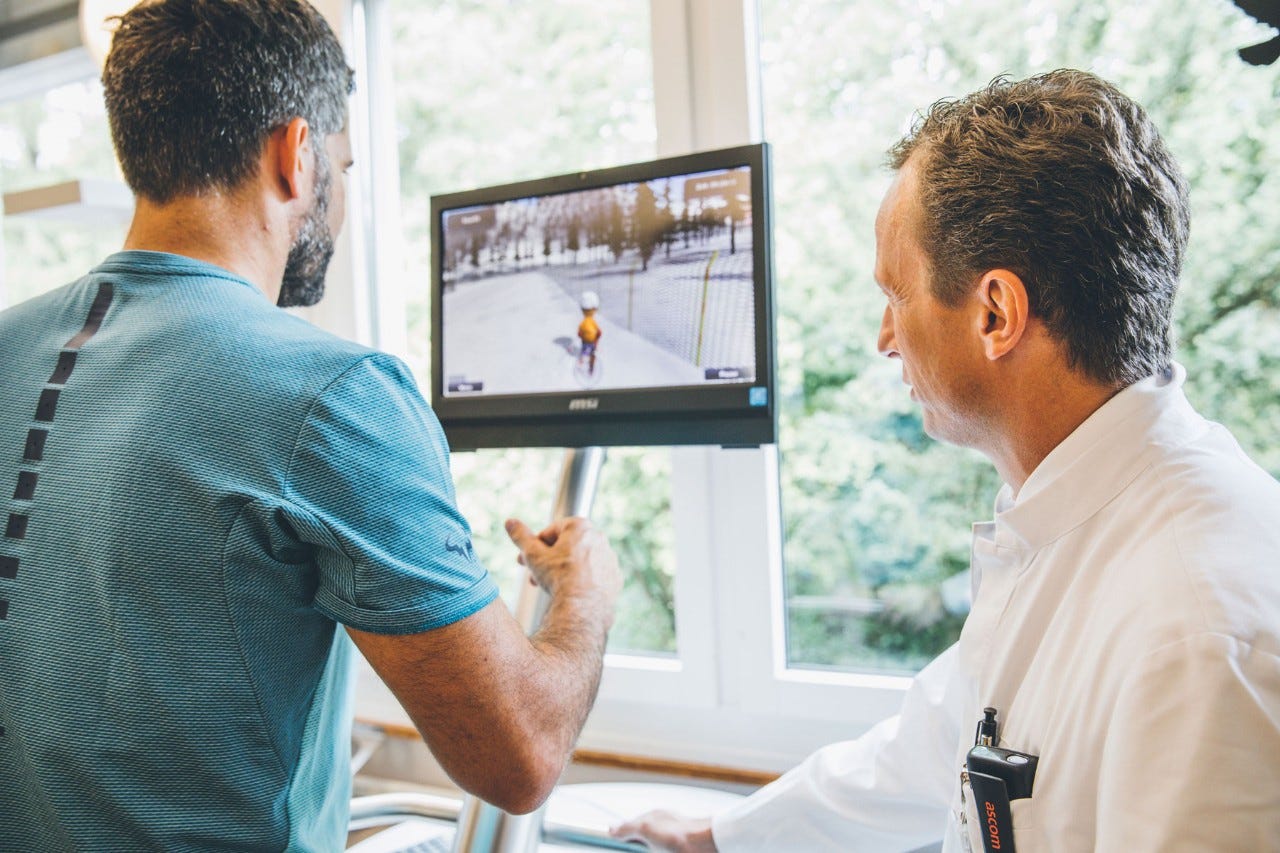Migraine: more than just a headache
Migraine sufferers are often not taken seriously. But migraine is a neurological disorder that massively limits one’s quality of life.

Everyone has headaches, but in most cases they’re not too bad. That’s one of the reasons why migraine sufferers face many prejudices – and sometimes even downplay their own suffering. According to the World Health Organisation (WHO), migraine is one of the diseases that has the greatest impact on quality of life.
“About one million people in Switzerland suffer from migraine,” estimates Andreas Gantenbein, a neurologist specialising in headaches and pain medicine. “Many people have frequent migraine attacks, but it’s not really noticed,” says Gantenbein, summing up the crux of the problem: migraine is invisible. For those affected, the lack of understanding among employers, friends and family is usually harder to bear than the disease itself.
“About one million people in Switzerland suffer from migraine.”
Causes and triggers of a migraine attack
The exact causes of this neurological disorder are not yet fully understood. Put simply, migraine sufferers’ brains process stimuli earlier and faster than in normal cases, which leads to a sensory overload. The predisposition is probably genetic. “Between 60 and 80 per cent of sufferers have a hereditary predisposition,” estimates Gantenbein.
If the migraine attacks occur on fewer than 15 days per month, they’re known as episodic migraine. If they occur on 15 or more days per month, they’re classed as chronic migraine. Often, the attacks occur spontaneously or result from triggers. A migraine diary can therefore be helpful to document the overload and find your own specific triggers. Known triggers include:
- stimulants in excess, especially coffee, alcohol and nicotine
- Changes in oestrogen levels, which is why women are more likely to be affected by migraine (often during ovulation and menstruation)
- Medicines, especially potency medicines and nitro preparations for the treatment of heart disease
- Environmental influences, especially changes in weather and altitude; external stimuli such as noise or smells are usually precursors rather than triggers
- Irregular food intake, hypoglycaemia and insufficient fluid intake
- Fluctuating sleeping patterns with too much or too little sleep
- Stress, both physical and mental
The symptoms of a migraine attack
A migraine usually announces itself 4 to 48 hours in advance. The warning signs include nervousness, euphoria, mood swings, loss of appetite, ravenous hunger, chills and sweating. The migraine itself lasts between a few hours and up to three days, and the pain can be excruciating: a pulsating, throbbing sensation, usually on one side.
In addition, there are typical symptoms such as hypersensitivity to light and noise, nausea and vomiting. Sensitivity to smell and touch are also common. Every movement makes the pain worse. “These are not the main problem, however, because they can easily be controlled using medication,” explains Gantenbein. However, vegetative symptoms such as loss of appetite, concentration problems and sensitivity to stimuli remain. In addition, those affected are exhausted, sensitive to pain and experience reduced performance for one to two days after a migraine attack.
Video: an affected person tells
What is migraine with aura?
Around 10 to 20 percent of sufferers have an aura before a migraine attack. These are often visual disturbances – from flashes of light to zigzag lines to blind spots – that start out small in size and slowly spread. They may also be accompanied by dizziness and sensory disturbances in the face, hands or legs. In rare cases, even speech is impaired. “An aura lasts on average 10 to 20 minutes, sometimes up to an hour,” explains Gantenbein.
The aura does not leave any permanent damage. However, the risk of a heart attack or stroke is slightly increased. This can be a problem especially if other risk factors such as smoking, birth control pills or high blood pressure are involved.
“Patients need sound advice and someone who really listens to them.”
The Swiss Headache Society brings together specialist doctors, primary care providers and scientists who work in the field of headaches. You can find experts, recommended treatments and practical tips on their website.
Treating migraine attacks: from acupuncture to lemon juice
Migraine is a chronic disease that cannot be cured. However, painkillers, medication, therapies and lifestyle adjustments reduce the number of attacks and the intensity of the headaches. As a result, sufferers regain their quality of life. “The treatment is built on three pillars: acute therapy, prophylaxis and non-medicinal treatments,” explains Gantenbein. "But there is no patent treatment. For doctors, the diagnosis is made quickly, but patients need sound advice and someone who really listens to them.”
-
Acute therapy
Medicinal treatment of an acute migraine attack must be tailored to the individual. In the case of mild headaches, non-steroidal analgesics such as ibuprofen or acetylsalicylic acid are sometimes sufficient.
If the pain is more severe, migraine medications from the triptane group are mainly used. In addition to painkillers, medications against nausea and vomiting are useful.
-
Medicinal prophylaxis
If the migraine attacks occur more than three times a month or are very intense, preventive measures are recommended. Medications such as beta-blockers, anti-epileptics, antidepressants and calcium antagonists are available for prophylaxis. These medications work well, but can also have side effects.
Another class of medications are the CGRP (Calcitonin Gene-Related Peptide) antibodies, which are well tolerated. For milder attacks, dietary supplements are effective, such as magnesium, vitamin B2 and coenzyme Q10.
-
Non-medicinal treatment
In addition to avoiding triggers, one should make sure to get enough and regular sleep as well as a regular and balanced diet. Drinking enough and balancing tension and relaxation are also important. Progressive muscle relaxation according to Jacobson, sufficient breaks in everyday life, and moderate endurance training three times a week help to balance stress.
Acupuncture can also have a positive effect on migraine. Simple home remedies such as lemon juice in coffee or facial steam baths with essential oils are worth a try for mild headaches. If the migraine disease puts a lot of strain on the sufferer’s everyday life and professional activities, behavioural psychological support is helpful.


